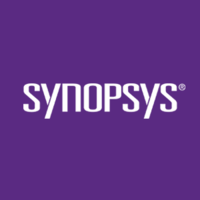Description

bugScout

Synopsys
Comprehensive Overview: bugScout vs Synopsys
a) Primary Functions and Target Markets of bugScout
Primary Functions:
-
Static Application Security Testing (SAST): bugScout primarily focuses on identifying security vulnerabilities in the source code by performing static analysis. It scans the code to detect potential issues without executing the program.
-
Code Quality Assurance: Apart from identifying security vulnerabilities, bugScout also assesses the overall code quality, identifying bugs, inefficiencies, and code standards violations.
-
Integration and Automation: bugScout provides APIs and plugins that allow integration with various CI/CD pipelines and development environments, enabling automated and continuous security testing during the software development lifecycle.
-
Customizable Rulesets: It offers customizable security rulesets that can be tailored to specific development needs, thereby enhancing its relevance and accuracy in different security contexts.
Target Markets:
- Software Development Companies: Organizations ranging from startups to large enterprises looking to enhance the security posture of their software products.
- Financial Services: Banks and financial institutions that require stringent security measures to protect sensitive data.
- Healthcare Organizations: Entities that must comply with regulatory standards such as HIPAA while ensuring the security of medical applications.
- Government and Defense: Agencies that need to safeguard their software systems against cyber threats.
- Manufacturing and Industrial Sectors: Firms that incorporate software into their operational technology (OT) and Internet of Things (IoT) devices, requiring robust security measures.
b) Market Share and User Base
While specific figures on the market share and user base of bugScout may not be publicly available, it exists in a competitive landscape of static analysis tools provided by industry leaders such as Synopsys, Veracode, Checkmarx, and Fortify. Synopsys, recognized for its broad range of application security testing solutions, has a strong presence in the market, leveraging its reputation and comprehensive suite of tools.
However, the specific market penetration and user base size of bugScout relative to its competitors might be lesser-known due to its more niche positioning within Synopsys' broader portfolio of software security solutions.
c) Key Differentiating Factors
-
Integration with Synopsys Portfolio: One of the key differentiators of bugScout is its integration with Synopsys' other security solutions. This synergy allows for a comprehensive security posture, where static analysis from bugScout can be complemented with other dynamic analysis tools, software composition analysis, and more.
-
Customization and Flexibility: bugScout allows for high degrees of customization in terms of rule configuration and reporting. This flexibility can be appealing to organizations that require tailored security analysis to address specific development practices or security requirements.
-
User-Friendly Interface: The design and usability of bugScout's interface may be more intuitive compared to other tools, focusing on ease of use for developers who may not be specialized in security.
-
Cost-Effectiveness for Specific Use Cases: Depending on pricing and licensing models, bugScout might offer competitive cost advantages for certain use cases or specific target markets.
-
Focus on Code Quality and Security: While many tools focus solely on security vulnerabilities, bugScout also emphasizes the importance of overall code quality, distinguishing it for organizations that value holistic development standards.
In summary, while bugScout is a pivotal component of Synopsys' application security offerings, its specific market share in the sea of SAST tools can be difficult to quantify without proprietary data. Its differentiation lies primarily in integration with Synopsys' broader security ecosystem, customization capabilities, and a dual emphasis on security and code quality.
Contact Info

Year founded :
2010
Not Available
Not Available
Brazil
http://www.linkedin.com/company/bugscout-international

Year founded :
Not Available
Not Available
Not Available
Not Available
Not Available
Feature Similarity Breakdown: bugScout, Synopsys
To provide a feature similarity breakdown for bugScout and Synopsys, let's look at each aspect you've mentioned:
a) Core Features in Common
Both bugScout and Synopsys offer a range of capabilities aimed at improving software security and quality. Common core features include:
-
Static Application Security Testing (SAST):
- Both tools perform static code analysis to identify vulnerabilities in the source code during development.
-
Comprehensive Reporting:
- They provide detailed reports on detected vulnerabilities, including severity levels, potential impact, and suggested remediation steps.
-
Integration Capabilities:
- Both solutions can integrate with popular development tools, CI/CD pipelines, and version control systems to streamline the security testing workflow.
-
Support for Multiple Languages:
- Each tool supports a wide variety of programming languages, making them versatile for different tech stacks.
-
Compliance and Standards Mapping:
- Both products offer mapping to industry standards and compliance guidelines, such as OWASP, PCI DSS, and others.
b) User Interface Comparison
-
bugScout:
- Offers a streamlined and user-friendly interface focusing on simplicity and ease of use. The dashboard provides quick access to key metrics and allows users to dive deep into specific issues or analysis results without excessive navigation.
-
Synopsys:
- Synopsys provides a more complex interface, reflecting its wide range of capabilities beyond just SAST, including Software Composition Analysis (SCA) and Dynamic Analysis. The interface offers detailed views and configurability, catering to advanced users who require multiple layers of information.
c) Unique Features
-
bugScout:
- Custom Rule Creation: bugScout allows users to create and define custom rules tailored to their specific coding standards and requirements.
- Higher Focus on Fast Deployment: Emphasizes faster setup and deployment, aiming to get teams up and running quickly.
-
Synopsys:
- Extensive Portfolio Integration: Through its entire product line (including Coverity, Black Duck, etc.), Synopsys offers an integrated suite covering various security and quality testing needs beyond just SAST.
- Advanced Vulnerability Detection: Uses advanced algorithms and machine learning techniques to enhance detection accuracy and reduce false positives.
In conclusion, while bugScout and Synopsys share core features related to static code analysis and vulnerability management, they differentiate themselves in user experience and unique features. bugScout leans towards simplicity and quick setup, whereas Synopsys offers a broader set of integrated tools and advanced analysis features for a comprehensive security approach.
Features

Not Available

Not Available
Best Fit Use Cases: bugScout, Synopsys
bugScout
a) Best Fit Use Cases for bugScout
-
Small to Medium-Sized Enterprises (SMEs):
- Focus on Cost-Effective Solutions: For SMEs that are looking for a cost-effective static analysis tool, bugScout offers a viable option with robust capabilities at a potentially lower price point compared to larger, enterprise-level solutions.
- Resource-Constrained Environments: Smaller teams with limited security resources might find bugScout to be a more manageable solution due to its simplicity and ease of integration.
-
Agile Development Environments:
- Frequent Releases: In agile settings where quick iterations and frequent releases are paramount, bugScout can provide agile-ready static analysis that integrates seamlessly into CI/CD pipelines.
-
Projects with Specific Technology Stacks:
- Specialized Codebases: For projects utilizing language or technology stacks specifically well-supported by bugScout, this tool would be particularly advantageous.
d) Industry Verticals and Company Sizes for bugScout
- Startups and Growth Companies: BugScout is ideal for startups and growing companies who need to integrate security testing without significant investment in complex tools.
- Technology and IT Services: These industries, often characterized by rapid development cycles and budget constraints, can benefit from a flexible tool like bugScout.
Synopsys (Broad Solutions Including Coverity, Black Duck, etc.)
b) Preferred Scenarios for Synopsys
-
Large Enterprises:
- Comprehensive Security Needs: Large organizations with extensive software portfolios benefit from Synopsys's comprehensive suite of tools that address a broad range of security concerns, from static and dynamic analysis to software composition analysis.
- Integrated Solutions: For businesses looking to incorporate a full spectrum software security platform that includes application testing, SCA, and risk prioritization, Synopsys delivers an integrated approach.
-
Highly Regulated Industries:
- Compliance Requirements: Industries with stringent compliance demands (e.g., finance, healthcare, automotive) will find Synopsys solutions indispensable for meeting regulatory requirements through detailed analytics and reports.
-
Complex Development Environments:
- Diverse Codebases: Synopsys is well-suited for enterprises managing complex, large-scale applications with multiple codebases or mixed technologies, offering strong support and integration capabilities.
d) Industry Verticals and Company Sizes for Synopsys
- Enterprise-Level Organizations: Synopsys is a good fit for large to enterprise-level companies requiring extensive security solutions that span multiple phases of the software development lifecycle.
- Finance, Healthcare, and Automotive Industries: These sectors benefit from Synopsys's comprehensive approach to vulnerability management, ensuring compliance and reducing risk in highly sensitive applications.
- Global Corporations: International companies can leverage Synopsys's scalability and worldwide support to manage and secure applications across different regions.
Overall, while bugScout is more suited to agile, cost-conscious, and smaller-scale projects, Synopsys provides a wide array of solutions tailored for large enterprises and organizations in need of comprehensive, end-to-end application security management across diverse industries.
Pricing

Pricing Not Available

Pricing Not Available
Metrics History
Metrics History
Comparing undefined across companies
Conclusion & Final Verdict: bugScout vs Synopsys
To provide a conclusion and final verdict for bugScout and Synopsys, let's evaluate these tools based on several key factors such as features, pricing, ease of use, and support, along with their pros and cons. This will help to determine which product offers the best overall value and provide recommendations for users trying to decide between the two.
Conclusion and Final Verdict
a) Best Overall Value:
Considering all factors, Synopsys tends to offer the best overall value for most organizations. Its comprehensive suite of tools, reputation for reliability, and strong customer support make it a valuable investment for large enterprises that require robust security and compliance solutions. However, for smaller teams or organizations with budget constraints, bugScout might present a more cost-effective option, especially if basic functionality is sufficient and pricing is a major concern.
b) Pros and Cons of Each Product:
Synopsys:
-
Pros:
- Comprehensive toolset covering a wide range of application security needs including static analysis, dynamic analysis, and open source management.
- Extensive support and documentation, making it easier for teams to integrate and deploy effectively.
- Strong reputation in the industry with a track record of reliability and effectiveness in identifying vulnerabilities.
- Scalability suitable for large enterprises requiring sophisticated security solutions.
-
Cons:
- Higher cost, which might not be feasible for smaller companies or those with limited budgets.
- Potentially steeper learning curve due to the complexity and breadth of features offered.
bugScout:
-
Pros:
- More budget-friendly, which can be an attractive option for small to medium-sized businesses or teams with limited resources.
- Offers essential security analysis features that can satisfy the basic needs of organizations without extensive security requirements.
- Easier to set up and use, making it suitable for teams who need quick, straightforward scanning solutions.
-
Cons:
- May lack some of the advanced features and integrations that larger organizations might require.
- Less established brand compared to Synopsys, which might impact perceived trust and reliability for critical applications.
- Limited scalability for highly complex or large-scale security projects.
c) Recommendations for Users:
-
For Large Enterprises: Synopsys is recommended due to its comprehensive feature set, reliability, and support, which are necessary for managing complex, large-scale security projects efficiently.
-
For Small to Medium-Sized Businesses or Start-ups: bugScout can be an excellent starting point, especially if cost is a major factor. It provides necessary security features without the heavy investment Synopsys requires.
-
Specific Needs:
- If advanced features and integrations are needed, along with a focus on compliance, Synopsys would likely be the better choice.
- For teams prioritizing ease of deployment and straightforward features without needing deep-integration capabilities, bugScout could meet those needs effectively.
Ultimately, the decision between bugScout and Synopsys should be guided by the organization's specific requirements, budgetary constraints, and desired level of security management.
Add to compare
Add similar companies



